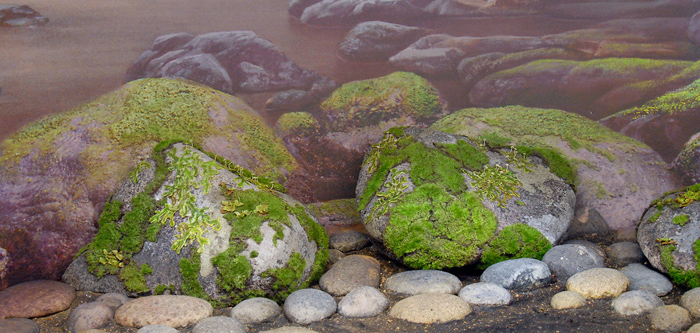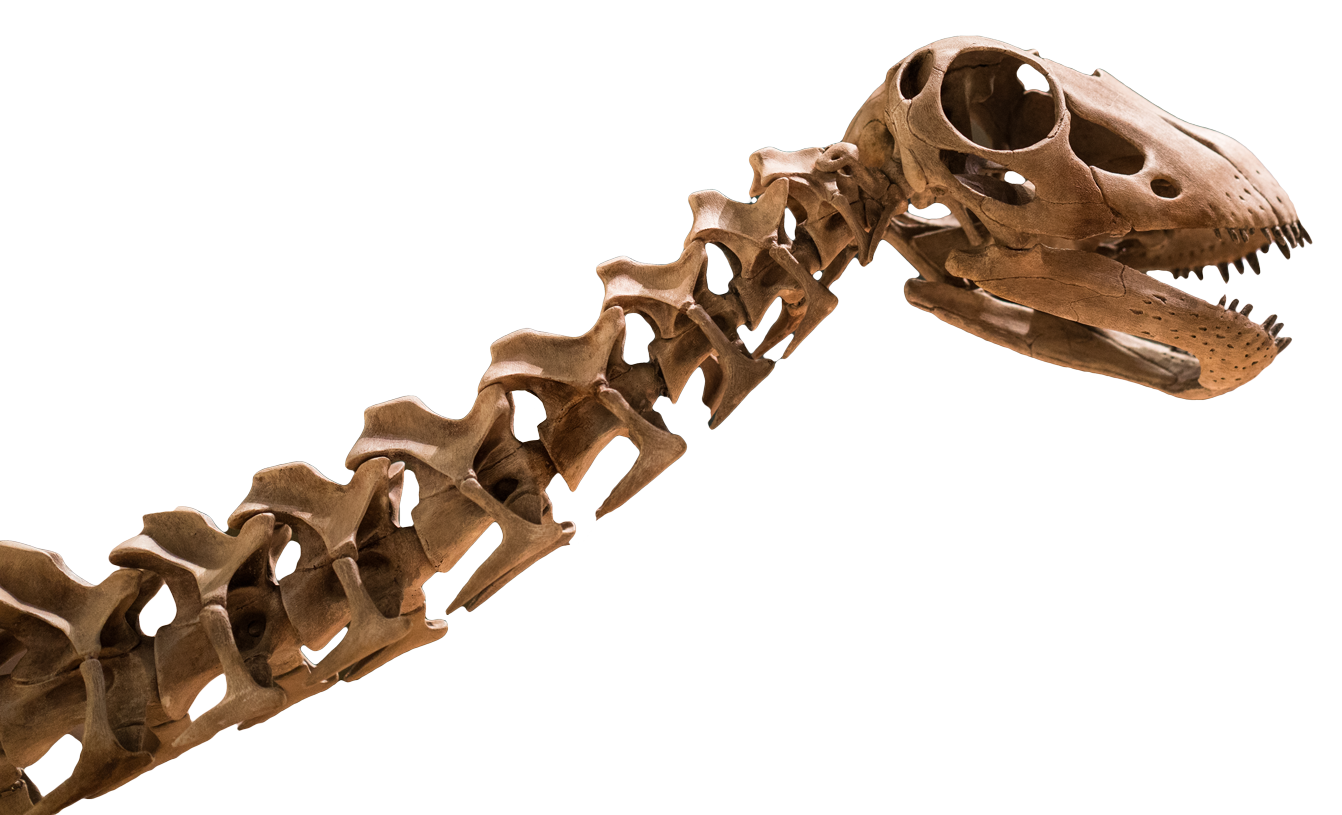Land Plants appear!
The oldest fossils that paleobotanists can reasonably confidently say are land plants are found in rocks deposited during the Ordovician Period (about 475 million years ago) in what is now Saudi Arabia.
These fossil are small spores in groups of twos and fours, representing the reproductive phase of an as-yet-unknown early plant. Spores in groups of two are known only from land plants.
Small, incomplete fragments of plant tissue containing spores in groups of four occur in younger Ordovician rocks (about 425,000,000 years old). Spores from these tissues show similarity to living liverworts.

Paleobotanists do not know what plant life on land would have looked like during their earliest history in the Ordovician because we do not have any complete fossils. Available evidence from both fossils and studies of evolutionary relationships among plants suggest a liverwort–hornwort–moss grade of vegetation living along streams and among rocks, fungi and lichens.
Can I find Ordovician plants in Oklahoma?
No. Unfortunately Ordovician rocks in Oklahoma are entirely marine in origin and do no preserve any clues to the life that lived on land at that time.


